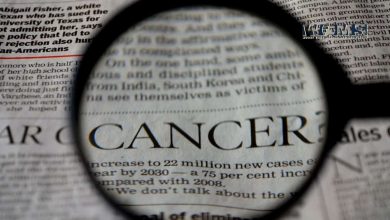Research and Development in the Pharmaceutical Industry

Research and development (R&D) form the cornerstone of the pharmaceutical sector, propelling the creation of innovative therapies that significantly alter patient treatment landscapes. Central to R&D efforts is the dedication to deciphering intricate biological mechanisms and developing medications that can target and alter these processes effectively.
The impetus for pharmaceutical breakthroughs often springs from the need to address unmet medical needs, improve existing therapies, and enhance overall healthcare outcomes. It’s a sector where scientific exploration meets technological advancement to forge a healthier future.
The Role of Advanced Technologies in Pharmaceutical R&D
The pursuit of medical innovations has led the pharmaceutical sector to increasingly depend on advanced technologies. These innovations are critical, pushing the frontiers of what’s achievable in healthcare. They facilitate the intricate dance of drug discovery, where each step from concept to clinic is streamlined and enhanced.
For example, one such innovation is the single cell dispenser, an instrument pivotal for precision medicine. This tool allows researchers to isolate and dispense individual cells, facilitating the development of therapies tailored to the genetic makeup of a patient’s disease. The shift towards personalized medicine is gaining momentum, striving to amplify the efficacy of drugs while minimizing unwanted side effects.
Moreover, the introduction of computational technologies such as artificial intelligence (AI) and machine learning (ML) is revolutionizing the industry, enabling the examination of extensive datasets to uncover potential new drugs and predict their effectiveness.
Drug Discovery and Development Process
The journey from concept to cure is a meticulous and multi-stage process. It begins with the identification of a biological target associated with a disease, followed by validation studies to confirm its relevance.
The subsequent stage involves high-throughput screening to identify compounds that can modulate the target’s activity. These compounds, once identified, enter a phase of rigorous optimization, yielding candidates for preclinical studies that assess safety and biological activity.
Clinical Trials: The Pathway from the Lab to the Patient
Clinical trials stand as a cornerstone of drug development, consuming considerable amounts of time and funding. With nearly 40% of the US pharmaceutical research budget allocated to them, their indispensable role in the advancement of medical treatments is clear. These trials serve as the vital link between the theoretical promise of laboratory discoveries and their practical application in patient care.
Phase I trials focus on safety in a small number of healthy volunteers. If successful, Phase II evaluates the drug’s efficacy and side effects in a larger patient population. Phase III is where the scope of testing broadens significantly, involving a diverse and large patient population. It’s designed to confirm the drug’s effectiveness, observe side effects, compare it to standard treatments, and collect robust data to ensure safe usage.
Throughout these phases, regulatory bodies meticulously oversee the protocols to ensure adherence to stringent ethical and safety standards.
The Economic Scope of Pharmaceutical R&D
The economic realm of pharmaceutical R&D is marked by both its complexity and hefty price tag. Bringing a new drug to fruition can require a multi-billion dollar outlay over several years, reflecting the intense investment needed to transition a drug from conception to commercial availability.
The capital for these projects typically comes from a blend of public and private sources, indicating the high value placed on these endeavors. The outlay on R&D is a key driver of drug pricing strategies, as companies seek to recoup their investments and fund future research.
Ethical Considerations in Pharmaceutical R&D
The ethical dimension of pharmaceutical R&D cannot be overstated. Clinical research must adhere to stringent ethical guidelines to protect participants from harm. Balancing the pursuit of profits with the imperative of patient care is a delicate dance for drug companies. Issues such as access to experimental drugs for terminally ill patients further ignite ethical debates, underscoring the need for a moral compass to guide R&D practices.
Future Trends in Pharmaceutical R&D
Looking forward, the pharmaceutical industry is poised to undergo further transformation. Personalized medicine is at the forefront, with genomic research paving the way for treatments that are tailored to individual genetic profiles. Nanotechnology is another area poised to redefine drug delivery, offering the potential for highly targeted therapy with minimal side effects.
Additionally, the trend towards collaborative ventures and open innovation models promises to expand the horizons of pharmaceutical research, bringing together diverse expertise and resources to tackle the complex challenges of drug development.
Final Thoughts
The relentless pursuit of better patient treatments defines pharmaceutical R&D. Emerging technologies and collaborative innovation underpin this journey, from single cell dispensers to AI-driven discoveries.
The industry’s mission transcends beyond mere discovery, aiming to deliver safer, more effective treatments that promise a healthier tomorrow. This unwavering dedication is the driving force behind every scientific breakthrough in the quest for medical advancement.




